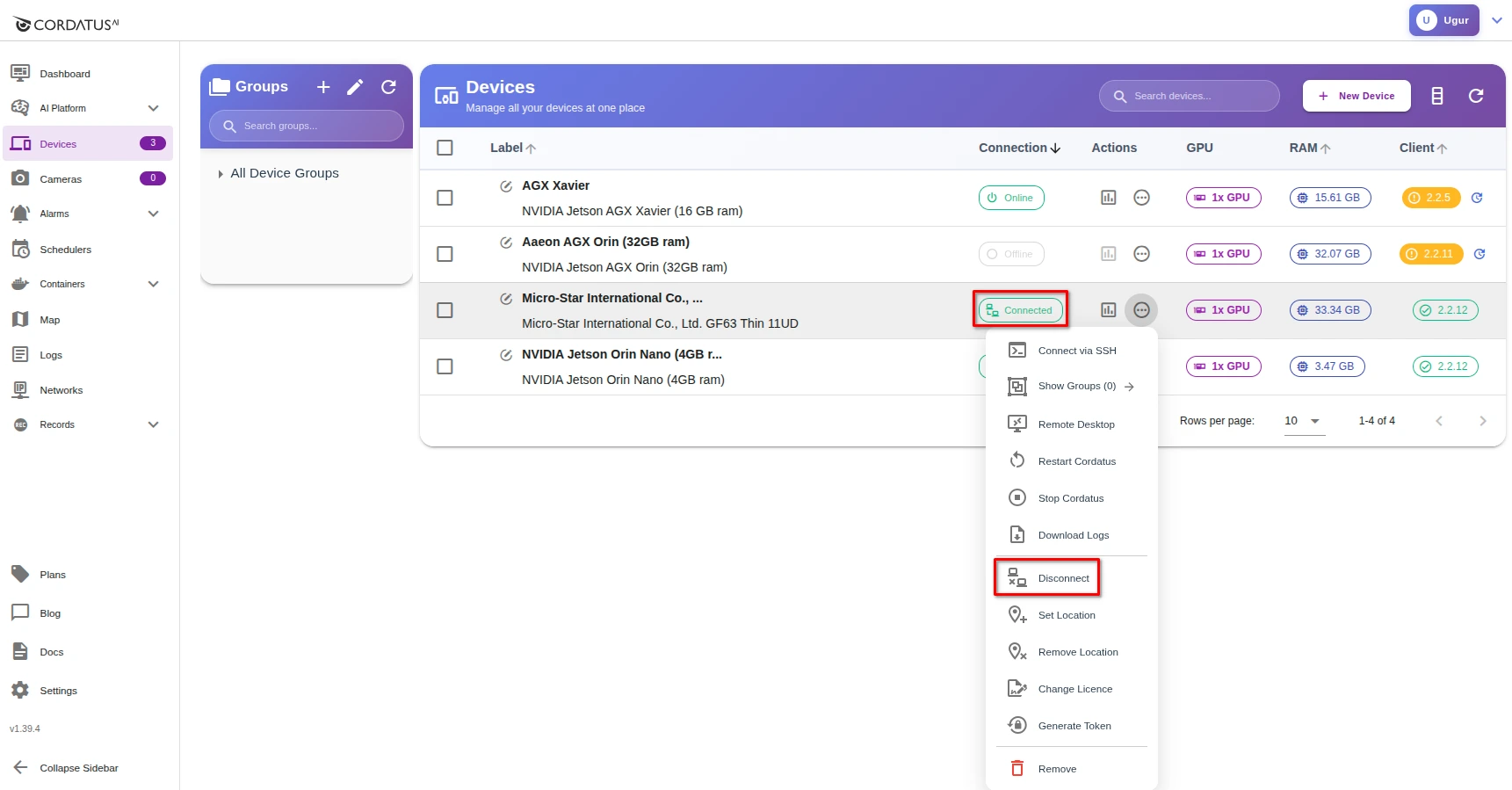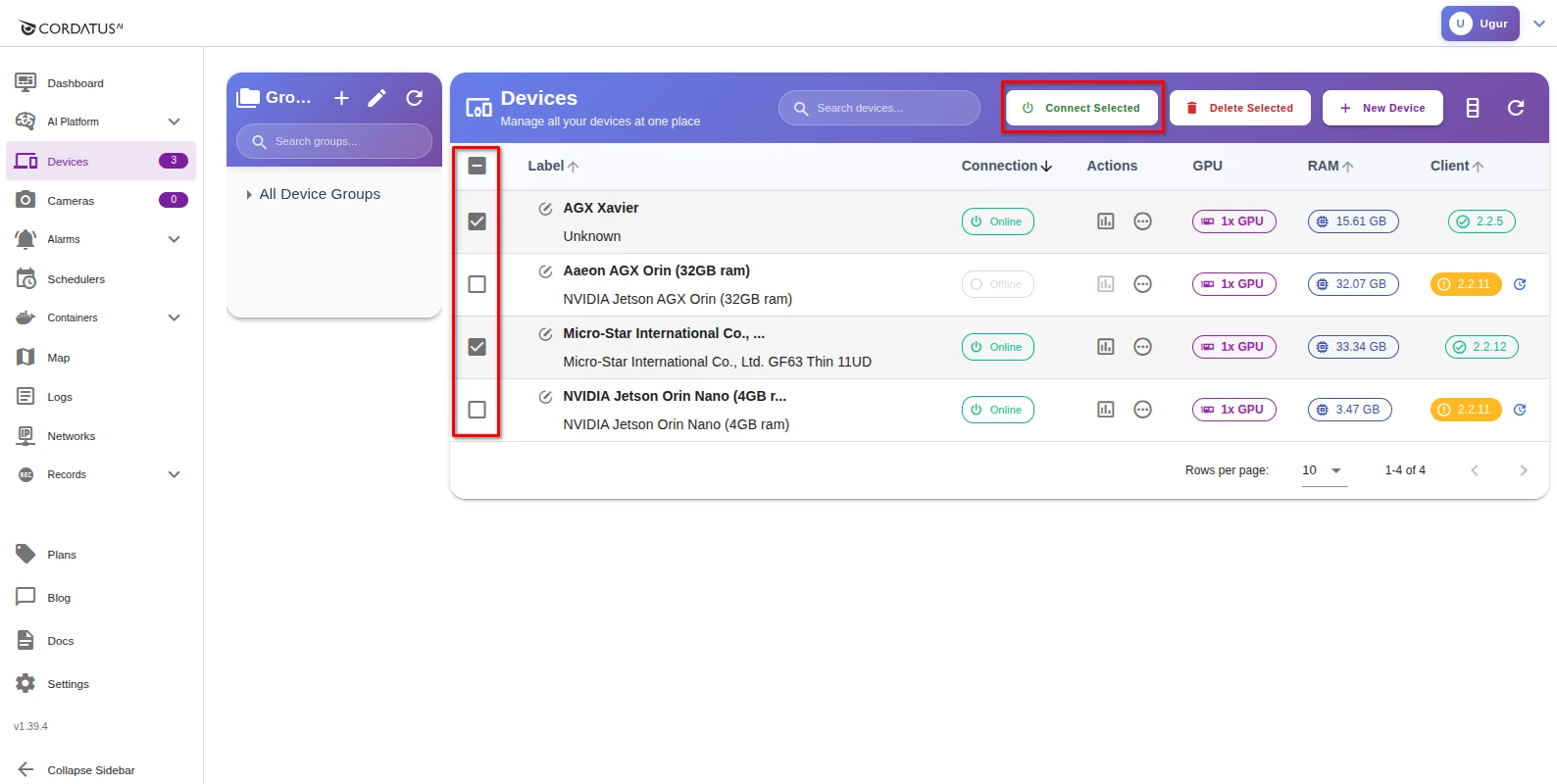Connectivity and Sessions
Use Connectivity & Sessions to bring devices online, start secure remote sessions (SSH / Remote Desktop), and manage active connections. This page ties together the device status model (Offline / Online / Connected), single & bulk connect/disconnect, and remote access workflows with security notes and troubleshooting.
Status model
Devices in Cordatus have three possible states: Offline, Online, Connected.
For short definitions, see Overview. Here we focus on how these states transition in practice:
-
Offline → Online
When you sign in, Cordatus checks all devices. Those without connectivity show as Offline.
Devices with internet but no active channel appear as Online. -
Online → Connected
To perform remote actions or open a session, you must connect the device.
Clicking Online in the device row (or bulk connect) transitions it to Connected. -
Connected → Online
Disconnecting a device ends the session channel. The device returns to Online as long as it still has internet access.

Connect and Disconnect
Single device
To connect:
- Go to Devices.
- In the Connection column of your target device, click Online to Connect.
- The state changes to Connected, and session actions become available.

To disconnect:
- Click Connected in the device row, or
- Open the ellipsis (…) menu under Actions and choose Disconnect.

Bulk connect/disconnect
- Select devices using the checkboxes (or the header checkbox).
- Click Connect Selected in the bulk bar.

Remote Access
Cordatus supports two remote access modes:
- SSH Tunnel — Terminal access through a secure, brokered tunnel (no public IP/DNS or inbound port exposure required).
- Remote Desktop — View/control a remote desktop or a specific window directly from your browser.
SSH Tunnel (secure tunneling)
An SSH Tunnel is a brokered, short-lived, end-to-end encrypted tunnel that lets you SSH into a device without opening firewall ports—similar to “secure tunneling / OOB” solutions.
How to connect
- Go to Devices → target device.
- Click the ellipsis icon under the Actions column, next to the metrics icon, to reveal actions.
- Select Connect via SSH, which opens the Connect via SSH modal.
- In the modal, click Copy to copy the SSH command.
- Open your terminal and paste the command.
- Replace
[USERNAME]with the OS username on the device. - Press Enter and provide the user password.
- If the terminal doesn’t accept
Ctrl+V, right-click in the terminal and select paste. - Credentials are never stored in plaintext by Cordatus.
- If the SSH connection fails or you encounter a timeout, the Cordatus SSH service may need to be restarted.
You can restart it from Settings → General Settings → Cordatus SSH on either the web or client interface.
See details → General Settings
Remote Desktop (browser-based)
Control the remote UI from your browser. You can stream full screen or a single window.
How to connect
- Go to Devices → target device.
- Click the ellipsis icon under the Actions column, next to the metrics icon, to reveal actions.
- Select the Remote Desktop button, prompting the Active Windows modal.
- In Active Windows, choose a screen or window.
- Click Start Remote Desktop.
- Session quality depends on device GPU/CPU, network latency, and bandwidth.
- Some OS dialogs (elevated privilege prompts) may not be capturable—use SSH if needed.